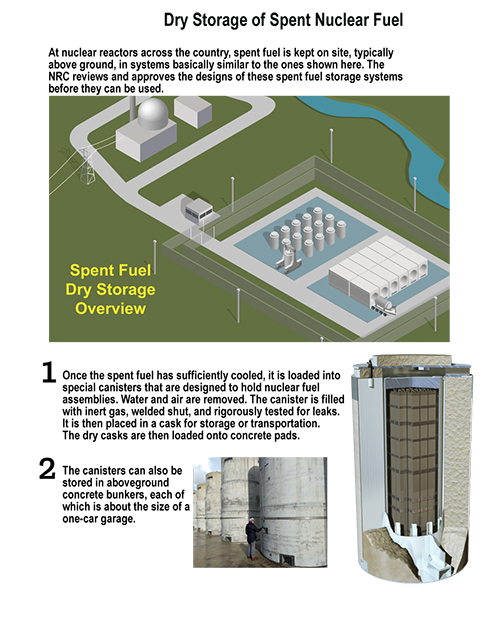Dry cask storage

A method for storing spent nuclear fuel in special containers known as casks. After fuel has been cooled in a spent fuel pool for at least 1 year, dry cask storage allows spent fuel assemblies to be sealed in casks or canisters and surrounded by inert gas. They are welded or bolted closed, and each is surrounded by steel, concrete, lead, or other material to provide leak-tight containment and radiation shielding. The casks may store the fuel horizontally or vertically in concrete vaults or on concrete pads.
Page Last Reviewed/Updated Friday, January 20, 2023
Page Last Reviewed/Updated Friday, January 20, 2023

